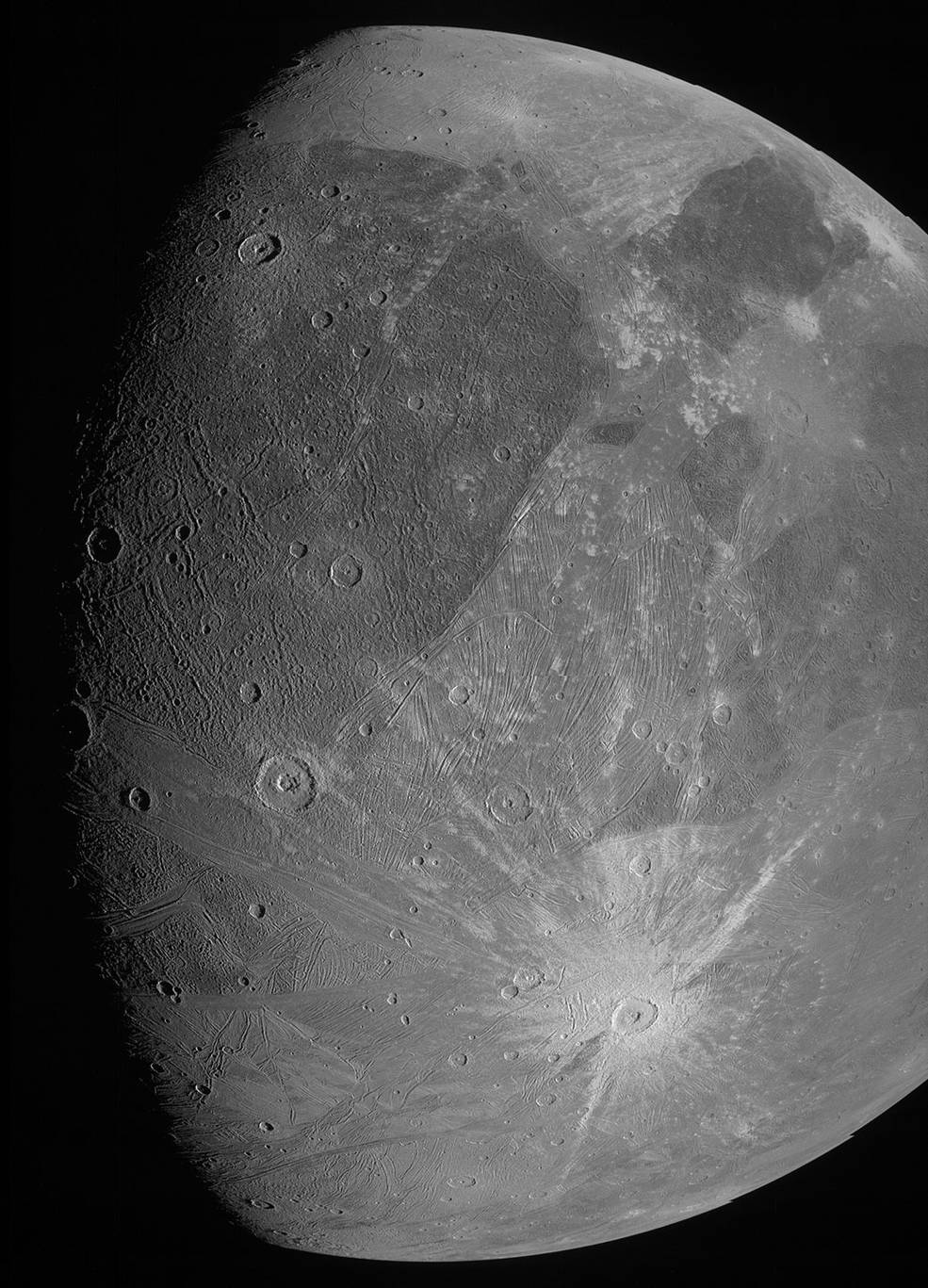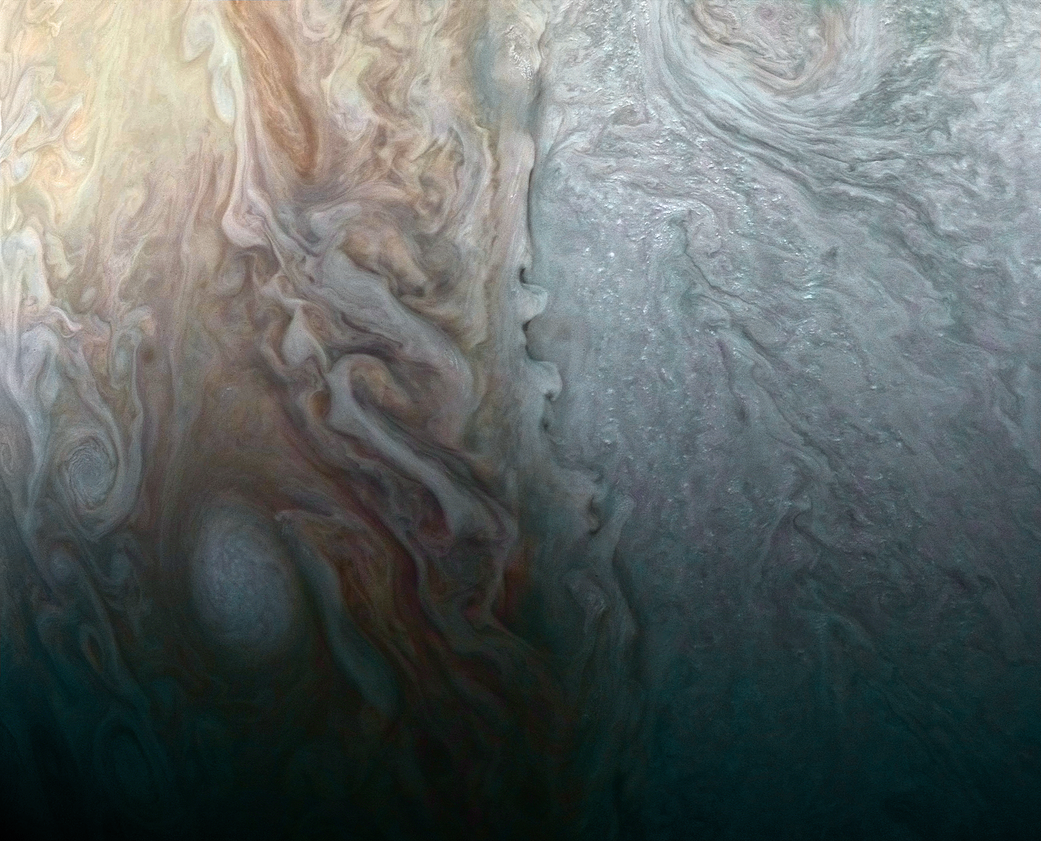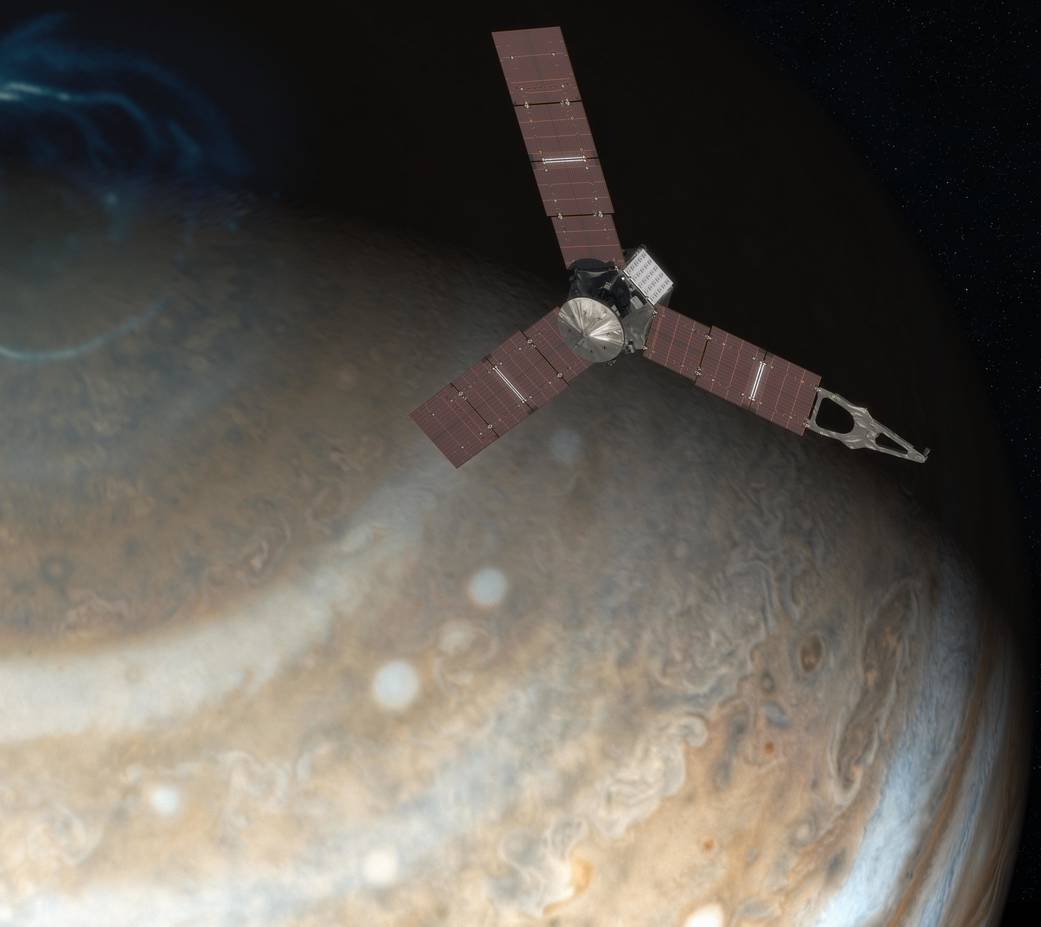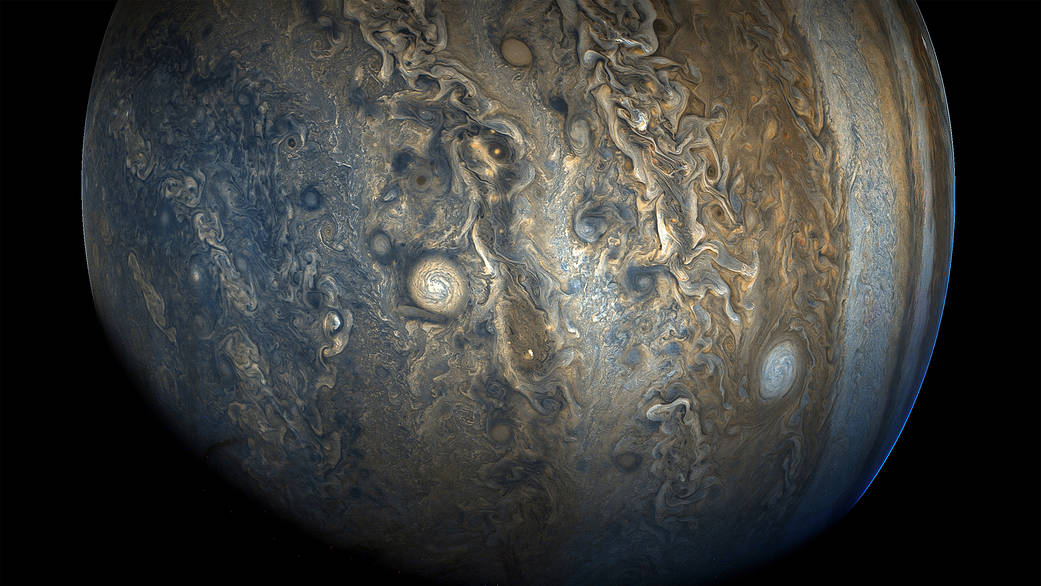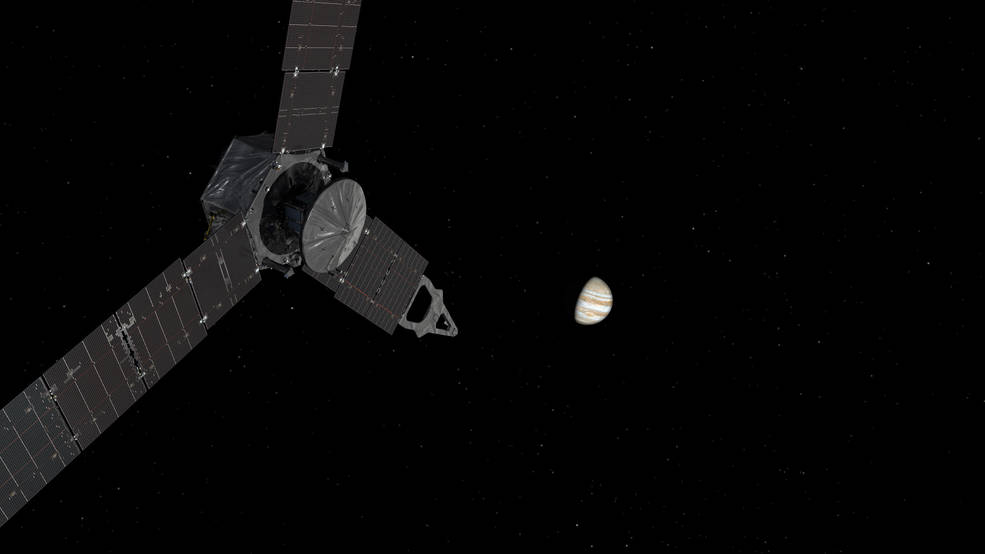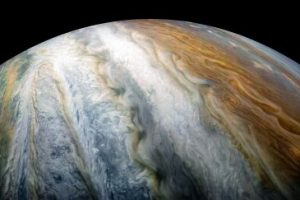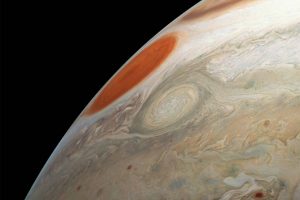NASAの木星探査機ジュノー搭載のカメラ「ジュノーカム」により撮影された木星の衛星「ガニメデ」の最新画像が公開されました。
2021年6月7日にジュノーがガニメデに最接近して撮影した2枚の高精細画像を受信したとNASAは伝えています。
ガニメデとは?
- 木星の第3衛星(ガリレオ衛星)で、太陽系で最大の衛星です。
- その大きさは月より大きく(1.51倍)、地球より小さい(0.41倍)ものです。
- 太陽系内の惑星で、唯一磁場を持つ惑星としても知られています。
- ちなみに金属の核と地表との間に海の層があると考えられており、海水の量は地球の海よりも多いとされています。
- なお、太陽系で最大のクレーターがあるといわれていますが、それはガニメデ地上にあるファロウ(Furrow)と呼ばれる溝状の筋から想像されているもので、普通に想像するようなクレーターの姿を見ることはできません。
NASAの公式サイトのURLはこちら:
See the First Images NASA’s Juno Took As It Sailed by Ganymede | NASA
以下はオリジナル原文と和訳です。
See the First Images NASA’s Juno Took As It Sailed by Ganymede
The spacecraft flew closer to Jupiter’s largest moon than any other in more than two decades, offering dramatic glimpses of the icy orb.
探査機が20 年以上を経て、木星の最大の衛星に最接近し、氷のような衛星地表の劇的な画像を撮影することができました。
The first two images from NASA Juno’s June 7, 2021, flyby of Jupiter’s giant moon Ganymede have been received on Earth. The photos – one from the Jupiter orbiter’s JunoCam imager and the other from its Stellar Reference Unit star camera – show the surface in remarkable detail, including craters, clearly distinct dark and bright terrain, and long structural features possibly linked to tectonic faults.
NASAの木星探査機ジュノーが 2021 年 6 月 7 日に撮影した、木星の巨大衛星ガニメデに最接近した際に撮影された最初の 2 つの画像が地球に送られてきました。 1 つはジュノー搭載のジュノーカムから、もう 1 つはSRUカメラからの写真で、クレーター、はっきりと区別できる暗い地形と明るい地形、地殻断層に関係していると考えられる長い構造的な特徴など、ガニメデ地表を驚くほど詳細にとらえています。
“This is the closest any spacecraft has come to this mammoth moon in a generation,” said Juno Principal Investigator Scott Bolton of the Southwest Research Institute in San Antonio. “We are going to take our time before we draw any scientific conclusions, but until then we can simply marvel at this celestial wonder.”
サンアントニオのサウスウエスト研究所のジュノー主任研究員であるスコット・ボルトンは、「これは、これまでガニメデに近づいた探査機の中でも最も近くに到達したものです」と述べています。 「科学的結論を出す前に時間をかけることになりますが、それにしても、この宇宙空間で見ることのできた驚異にただ驚くばかりです。」
Using its green filter, the spacecraft’s JunoCam visible-light imager captured almost an entire side of the water-ice-encrusted moon. Later, when versions of the same image come down incorporating the camera’s red and blue filters, imaging experts will be able to provide a color portrait of Ganymede. Image resolution is about 0.6 miles (1 kilometer) per pixel.
ジュノー探査機搭載のジュノーカム可視光カメラは、緑色のフィルターを使用して、水氷に覆われたガニメデのほぼ全面を撮影しました。その後、カメラの赤と青のフィルターを組み込んだ同じ画像が得られると、画像の専門家はガニメデのカラー ポートレートを提供できるようになります。画像の解像度は、1 ピクセルあたり約 0.6 マイル (1 キロメートル) です。

Credits: NASA/JPL-Caltech/SwRI
In addition, Juno’s Stellar Reference Unit, a navigation camera that keeps the spacecraft on course, provided a black-and-white picture of Ganymede’s dark side (the side opposite the Sun) bathed in dim light scattered off Jupiter. Image resolution is between 0.37 to 0.56 miles (600 to 900 meters) per pixel.
さらに、探査機の進路を維持するナビゲーションカメラでもあるジュノーのSRUは、木星から散乱した薄暗い光を浴びたガニメデのダークサイド (明るい面の反対側) の白黒写真を提供しました。画像の解像度は、1 ピクセルあたり 0.37 ~ 0.56 マイル (600 ~ 900 メートル) です。
“The conditions in which we collected the dark side image of Ganymede were ideal for a low-light camera like our Stellar Reference Unit,” said Heidi Becker, Juno’s radiation monitoring lead at JPL. “So this is a different part of the surface than seen by JunoCam in direct sunlight. It will be fun to see what the two teams can piece together.”
「ガニメデのダークサイの撮影条件は、SRUのような低照度カメラにとって理想的なものでした」と、JPL でジュノの放射線監視責任者を務めるハイディ・ベッカーは述べています。 「つまり、これはジュノーカムが直射反射光の下で見た表面とは異なる部分です。 2つの写真を一緒にすることから何が導き出されるのか楽しみです。」
The spacecraft will send more images from its Ganymede flyby in the coming days, with JunoCam’s raw images being made available here.
ジュノー探査機は、数日以内にガニメデの最接近からさらに多くの画像を撮影して送信してくる予定なので、準ーカムの生画像はここから利用できるようになります。
The solar-powered spacecraft’s encounter with the Jovian moon is expected to yield insights into its composition, ionosphere, magnetosphere, and ice shell while also providing measurements of the radiation environment that will benefit future missions to the Jovian system.
太陽光を動力とする探査機が木星の衛星に接近することで、その組成、電離層、磁気圏、氷殻に関する洞察が得られると同時に、木星系への将来のミッションに役立つ放射線環境の測定結果も得られることが期待されています。
More About the Mission
JPL, a division of Caltech in Pasadena, California, manages the Juno mission for the principal investigator, Scott J. Bolton, of the Southwest Research Institute in San Antonio. Juno is part of NASA’s New Frontiers Program, which is managed at NASA’s Marshall Space Flight Center in Huntsville, Alabama, for the agency’s Science Mission Directorate in Washington. Lockheed Martin Space in Denver built and operates the spacecraft.
More information about Juno is available at:
More information about Juno is available at:
https://www.missionjuno.swri.edu
Follow the mission on Facebook and Twitter at:
https://www.facebook.com/NASASolarSystem
DC Agle
Jet Propulsion Laboratory, Pasadena, Calif.
818-393-9011
agle@jpl.nasa.gov
Karen Fox / Alana Johnson
NASA Headquarters, Washington
301-286-6284 / 202-358-1501
karen.c.fox@nasa.gov / alana.r.johnson@nasa.gov
Deb Schmid
Southwest Research Institute, San Antonio
210-522-2254
dschmid@swri.org
2021-117
Last Updated: Jun 9, 2021
Editor: Tony Greicius
